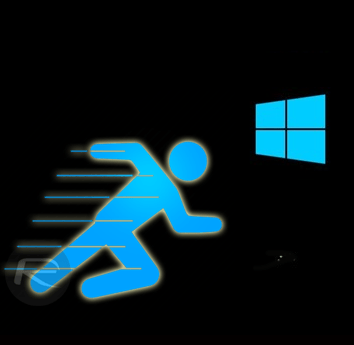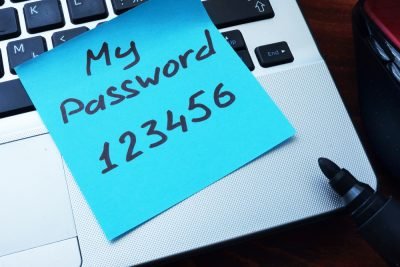It’s no secret that the way we work has undergone a major transformation in recent years. With the rise of remote work, we’ve experienced newfound freedom and flexibility. But as with any change, there are always challenges to navigate, and one of the biggest challenges in this digital age is cybersecurity.
Picture this: you’re working from the comfort of your home, sipping on your favorite coffee, and tackling your tasks with ease. Life couldn’t be better, right? Well, not so fast. Behind the scenes, lurking in the digital shadows, cybercriminals are ready to pounce on unsuspecting remote workers like you.
In this article, we’re going to shine a light on the dark side of remote work and uncover how cybercriminals are taking advantage of this new work landscape. But fear not, for we won’t leave you hanging! We’ll also equip you with the knowledge and tools to protect yourself and your business from their wicked schemes.
So, grab a cup of coffee, get cozy, and let’s delve into the vulnerabilities of remote work and how we can thwart cybercriminals at every turn. Together, we’ll navigate this ever-changing digital realm and ensure that your remote work experience remains secure and hassle-free.
Are you ready? Let’s dive in!
II. The Vulnerabilities of Remote Work:
Alright, folks, let’s talk about the vulnerabilities that come hand in hand with remote work. While we enjoy the freedom of working from anywhere, cybercriminals see it as an open invitation to exploit the situation. It’s like leaving the front door of your house wide open while you’re away on vacation. Not a great idea, right?
One major vulnerability is the lack of a secure network infrastructure. When we work from home or coffee shops, we often connect to public Wi-Fi networks that are about as secure as a cardboard fort. These networks are like a playground for cybercriminals, where they can easily intercept our sensitive information and wreak havoc.
And let’s not forget about the increased use of personal devices. While it’s convenient to use our own laptops, tablets, or smartphones for work, it also poses risks. Our personal devices may not have the same level of security measures as company-owned devices, making them more susceptible to attacks. It’s like inviting a hacker to a party and giving them a VIP pass!
Another challenge is the limited control over employee environments. Think about it: when you work in an office, the IT team has control over the network, security measures, and everything in between. But when you’re working remotely, it’s a whole different ball game. You might be sharing your workspace with roommates, family members, or even pets (they can be quite mischievous, trust me!). It’s hard to ensure that everyone is following cybersecurity best practices, and one slip-up can lead to trouble.
Let me share a personal story to drive the point home. My friend, Lisa, a dedicated remote worker, had an “oops” moment when her cat knocked over a cup of coffee onto her laptop. While her laptop was in a sorry state, she was lucky that her files were backed up securely in the cloud. However, this incident made her realize the importance of device security and the need to take extra precautions in her remote work environment.
So, my fellow remote warriors, it’s essential to acknowledge these vulnerabilities and take proactive steps to protect ourselves. In the next sections, we’ll delve into the specific cybersecurity threats you should watch out for and equip you with strategies to outsmart those cyber sneaks.
III. Common Cybersecurity Threats in Remote Work:
Let’s talk about the villains of the digital world—the common cybersecurity threats that you may encounter while working remotely. These sneaky cybercriminals are like the bullies of the online realm, always on the lookout for an opportunity to cause trouble. But fret not, for we have the power to outsmart them and keep our remote work journey smooth and secure.
One of the notorious troublemakers is phishing attacks. Imagine receiving an email that appears to be from your trusted bank, asking you to update your account information. It looks legit, right down to the logo and email address. But hold on, it’s actually a trap set by cybercriminals trying to steal your sensitive information. Sneaky, right?
Let me share a personal anecdote to illustrate the danger of phishing attacks. My friend Sarah, an avid remote worker, once received an email that seemed to be from her company’s IT department, asking her to reset her password. Without thinking twice, she clicked the link and entered her credentials. Little did she know that it was a phishing attempt, and she had just handed over her login details to the bad guys. Fortunately, her company had robust security measures in place, and the incident was quickly detected and resolved. But it served as a wake-up call for Sarah to always stay vigilant and double-check before clicking any suspicious links.
Next on our list of troublemakers is malware and ransomware. These digital pests are like the sneaky bugs that invade your garden—except instead of eating your plants, they wreak havoc on your devices and hold your data hostage. They can enter your system through malicious downloads, infected email attachments, or even fake websites. Once they infiltrate, they can cause all sorts of chaos, from stealing your personal information to encrypting your files and demanding a hefty ransom.
Now, let me share a cautionary tale about my friend Mark. He was working remotely one day when he unknowingly clicked on a malicious link while browsing the web. In an instant, his laptop was infected with ransomware, and he couldn’t access any of his important files. Talk about a nightmare! Luckily, he had regular backups of his data, which saved the day. But the experience left him shaken and taught him the importance of having strong cybersecurity measures in place.
Last but not least, let’s not forget about the dangers of unsecured Wi-Fi networks. Picture this: you’re sitting at your favorite coffee shop, sipping on your latte, and working away on your laptop. The Wi-Fi is free, and life seems blissful. But wait, did you know that cybercriminals can eavesdrop on unsecured Wi-Fi networks and intercept your sensitive data? It’s like having a nosy neighbor listening in on your private conversations!
To highlight the risks of unsecured Wi-Fi networks, let me share a little story. My cousin, James, loves working remotely from coffee shops. He once connected to an unsecured Wi-Fi network without a second thought. Little did he know that a cyber-snoop sitting at a nearby table was able to capture his login credentials as he logged into his company’s server. It was a wake-up call for James to be more cautious and use a virtual private network (VPN) whenever he connected to public Wi-Fi networks.
So, my remote work warriors, it’s crucial to be aware of these common cybersecurity threats. Stay vigilant against phishing attacks, protect yourself from malware and ransomware, and be cautious when using unsecured Wi-Fi networks. We’ll cover strategies to defend ourselves against these villains in the next sections, so stay tuned and stay safe!
Remember, we’re the heroes of our own digital realms, equipped with knowledge and the power to outsmart those cyber tricksters.
IV. Essential Cybersecurity Practices for Remote Work:
Alright, my digital superheroes, it’s time to gear up with some essential cybersecurity practices that will keep those cyber villains at bay. Think of these practices as your trusty shield and sword, ready to defend your remote work kingdom. So, let’s dive in and explore the strategies that will keep you one step ahead of the bad guys.
First and foremost, let’s talk about strong passwords. I know, I know, we’ve all heard this advice a thousand times, but trust me, it’s crucial! Think of your password as the key to your digital fortress. You wouldn’t use a flimsy toothpick as your front door key, right? So, choose a strong, unique password for each of your accounts. And here’s a little tip from my own experience: use a passphrase instead of a single word. It’s easier to remember and harder for the cyber fiends to crack.
Speaking of passwords, let me share a funny story from my early days of remote work. I used to have a password that was so complicated, it took me five attempts to log into my own accounts. It was like a secret code that even I couldn’t crack! I soon realized that while strong passwords are important, they should also be manageable. So, find the sweet spot between security and convenience.
Next up, let’s talk about software updates. Yes, I can already hear the collective sighs, but bear with me on this one. Software updates are like little patches that fix vulnerabilities and strengthen the walls of your digital fortress. Think of them as a superhero costume upgrade—each update makes you more powerful and protected. So, don’t ignore those update notifications. Embrace them and let your devices bask in their security-enhancing glory.
Now, let’s talk about the magical world of encryption. It’s like casting an invisibility spell on your sensitive data. When you encrypt your files, messages, or even your entire device, you make it incredibly difficult for cybercriminals to make sense of the information they steal. It’s like handing them a bunch of gibberish instead of the crown jewels!
One day, my friend Alex had his laptop stolen while he was traveling for work. Panic set in as he realized that all his important documents and client information were on that device. But here’s where encryption came to the rescue. Since Alex had encrypted his laptop, the thief was left with a useless piece of hardware and no access to the valuable data inside. It was a valuable lesson for Alex, and he became a firm believer in the power of encryption.
Last but not least, let’s talk about the importance of using a virtual private network (VPN) for secure remote connections. A VPN is like your own secret tunnel through the digital universe. It encrypts your internet traffic and masks your IP address, making it nearly impossible for cybercriminals to track or intercept your online activities. It’s like wearing an invisibility cloak in the virtual world!
I remember the day I first started using a VPN. It was like stepping into a secret agent movie. I felt like James Bond, operating in the shadows, invisible to prying eyes. But jokes aside, a VPN adds an extra layer of security, especially when connecting to public Wi-Fi networks. So, whether you’re sipping coffee at a café or working from a hotel room, always make sure to activate your trusty VPN.
So, my remote work champions, embrace strong passwords, keep your devices up to date, encrypt your sensitive data, and don’t forget to use a VPN for secure connections. These practices will fortify your defenses and keep those cyber baddies at bay. Stay tuned for the next section, where we’ll explore additional security measures to keep you one step ahead in this digital adventure!
Remember, you’re not just remote workers—you’re cyber warriors protecting your kingdom of productivity and security.
V. Cultivating a Cyber-Aware Remote Work Culture:
Alright, my fellow digital warriors, we’ve covered the technical aspects of remote work cybersecurity, but there’s another crucial piece to the puzzle—the human factor. Yes, I’m talking about the most unpredictable element in the cyber realm—us, the remote work warriors. Building a cyber-aware culture is like forging an unbreakable bond between our virtual selves and our real-world actions. So, let’s dive into the realm of human behavior and explore how we can become the ultimate guardians of our digital domains.
First and foremost, let’s talk about the power of education and awareness. It’s like equipping ourselves with a special superpower—the ability to spot and thwart cyber threats before they even have a chance to strike. By educating ourselves and our remote work teams about the latest cybersecurity trends and best practices, we become a force to be reckoned with.
Now, let me share a personal story that highlights the importance of education. Once upon a time, in a remote work kingdom not so far away, my friend Jessica received an email that claimed to be from her bank. It was well-crafted, complete with official logos and convincing language. However, because Jessica had attended a cybersecurity workshop just a week prior, she immediately recognized the signs of a phishing attack. She proudly deleted the email and saved herself from falling into the cyber trap. It was a victory fueled by knowledge and awareness.
Next, let’s talk about the art of creating strong and positive password habits. We’ve already discussed the importance of strong passwords, but it’s equally important to instill good password practices within our remote work community. Remember, a chain is only as strong as its weakest link. So, encourage everyone to embrace the power of strong and unique passwords, and to avoid the temptation of using “123456” or “password” as their digital keys.
I’ll share a funny anecdote from my own experience. Once, during a team meeting, we decided to hold a friendly competition to see who could come up with the most creative password. The results were hilarious! From “CaptainUnicorn123” to “PizzaIsLife!2021,” we had a good laugh while also highlighting the importance of password creativity and complexity. It was a fun way to engage everyone and reinforce the message that strong passwords are key to a secure remote work environment.
Now, let’s move on to the role of communication and collaboration in fostering a cyber-aware culture. Remember, we’re not lone warriors in this digital adventure—we’re a team! Encourage open lines of communication, where everyone feels comfortable reporting suspicious emails, sharing cybersecurity tips, and discussing potential threats. Together, we can build a shield of knowledge and support.
I’ll share a personal story about the power of collaboration. Once, my team encountered a suspicious email that seemed to slip through our defenses. Instead of panicking or ignoring it, we immediately jumped into action. We started a group chat, shared the email details, and collectively investigated the threat. In the end, it turned out to be a phishing attempt, but our swift response prevented any damage. It was a victory for teamwork and communication.
Lastly, let’s not forget the importance of regular cybersecurity audits and updates. Just as we clean out our closets or check the oil in our cars, we need to periodically assess our remote work security measures. Conducting cybersecurity audits, updating software, and reviewing access controls ensure that we’re staying on top of potential vulnerabilities.
I’ll share a personal lesson learned from a cybersecurity audit gone wrong. During an audit, we discovered an outdated software version that had a known security flaw. It was like finding a hidden crack in our digital fortress. But by promptly updating the software, we closed the gap and tightened our defenses. It served as a reminder that staying vigilant and proactive is essential in the ever-evolving landscape of cyber threats.
So, my fellow cyber warriors, let’s prioritize education and awareness, cultivate strong password habits, foster communication and collaboration, and conduct regular cybersecurity audits. By doing so, we not only protect ourselves but also contribute to a culture of cyber resilience and strength.
Stay tuned for the next section, where we’ll explore additional strategies to bolster our remote work defenses and emerge as true champions of the digital realm. Together, we can conquer the challenges of remote work and triumph over cybercriminals!
VI. Utilizing Reliable Remote Collaboration Tools:
Alright, my digital comrades, we’ve covered the essentials of remote work cybersecurity and the human element. Now, let’s dive into the world of remote collaboration tools—the weapons in our arsenal that enable us to work seamlessly and securely from anywhere. These tools not only enhance our productivity but also play a crucial role in safeguarding our data and communications.
In today’s interconnected world, we have an array of collaboration tools at our disposal. From project management platforms to video conferencing apps, these tools bring us together virtually, bridging the physical distance between team members. However, not all tools are created equal when it comes to cybersecurity.
Let me share a personal experience to illustrate the importance of choosing reliable collaboration tools. A few months ago, my team adopted a new file-sharing platform that promised convenience and efficiency. However, we soon discovered that the platform lacked robust security measures, leaving our sensitive documents vulnerable to unauthorized access. It was a wake-up call for us to prioritize security over convenience. We swiftly migrated to a more secure solution, ensuring that our data remained protected.
When selecting remote collaboration tools, prioritize those that offer end-to-end encryption, multi-factor authentication, and secure data storage. Look for trusted providers who prioritize the privacy and security of your information. Remember, the right tools can empower us to collaborate effectively while keeping cyber threats at bay.
VII. Enforcing Secure Remote Access:
Now that we have reliable collaboration tools in place, let’s talk about the importance of secure remote access. With remote work, we’re no longer confined to a physical office space, but that also means our access points to corporate networks need to be fortified.
One effective measure is implementing a Virtual Private Network (VPN) to establish a secure connection between remote devices and the company’s internal network. A VPN creates a tunnel that encrypts our data and shields it from prying eyes. It’s like having a secret passage to our virtual headquarters that only we can access.
Let me share a personal story that highlights the significance of secure remote access. A friend of mine, Sarah, used to work remotely from various coffee shops. She enjoyed the freedom and flexibility, but one day, she fell victim to a Wi-Fi eavesdropping attack. Unbeknownst to her, a cybercriminal had set up a fake Wi-Fi hotspot at the coffee shop, intercepting her sensitive data. Luckily, Sarah had learned about VPNs from a cybersecurity workshop and had one installed on her device. The VPN encrypted her data, rendering it useless to the eavesdropper. It was a lesson about the importance of secure remote access and the role it plays in keeping our data safe.
So, make sure your remote workforce understands the significance of using secure networks and implementing VPNs. Educate them about the risks of connecting to public Wi-Fi hotspots without proper protection. By enforcing secure remote access practices, we can significantly reduce the chances of unauthorized access to our corporate networks.
VIII. Maintaining a Strong Remote Work Security Culture:
As we near the end of our remote work cybersecurity journey, my fellow warriors, let’s talk about the importance of maintaining a strong security culture. Cybersecurity is not a one-time endeavor but an ongoing commitment that requires everyone’s participation and dedication.
Emphasize the significance of regular software updates and patches. These updates often contain critical security fixes that address vulnerabilities discovered by software developers. Encourage your team members to keep their devices and applications up to date, ensuring they have the latest security patches installed.
Additionally, promoting good password hygiene is essential. Encourage your team to use password managers, which generate and store complex passwords securely. This eliminates the need to remember multiple passwords and reduces the risk of weak or reused passwords.
Lastly, conduct periodic cybersecurity training sessions or workshops to refresh your team’s knowledge and keep them informed about the latest threats and best practices. These sessions can be interactive and engaging, using real-life examples and anecdotes to drive the importance of cybersecurity home.
Remember, my friends, cybersecurity is a collective effort. By fostering a strong security culture, we create a united front against cyber threats, ensuring that our remote work environment remains resilient and secure.
As we conclude this journey, let’s take a moment to appreciate the resilience and adaptability we’ve shown throughout the remote work transition. While the challenges were undeniable, we have emerged stronger and more aware of the importance of cybersecurity.
By prioritizing the human element, implementing robust security measures, and nurturing a strong security culture, we can thrive in the remote work landscape while keeping cyber threats at bay. So, my fellow remote work warriors, let’s continue to champion cybersecurity, embrace the wonders of remote work, and ensure that our digital realms remain safe and secure.
In the ever-evolving landscape of remote work, cybersecurity has become a critical component of our digital lives. The risks and challenges we face are real, but by staying informed, implementing robust security measures, and fostering a strong security culture, we can overcome them.
Throughout this journey, we’ve explored the dark side of remote work, from the vulnerabilities of home networks to the tactics of cybercriminals. We’ve discussed the importance of human vigilance, the role of reliable technology, and the significance of secure practices.
Remember, cybersecurity is not a one-time fix but a continuous effort. It requires our constant attention, adaptability, and willingness to stay one step ahead of the threats. By investing in cybersecurity education, leveraging secure technologies, and nurturing a security-conscious mindset, we can protect ourselves, our businesses, and our digital assets.
Let’s not allow fear to paralyze us but rather empower ourselves with knowledge and take proactive steps to safeguard our remote work environments. Together, we can create a culture of cybersecurity resilience, where our businesses thrive and our data remains secure.
So, my fellow remote work warriors, let’s embrace the opportunities that remote work brings while being mindful of the associated risks. By working together, sharing insights, and supporting one another, we can conquer the challenges of remote work cybersecurity and ensure a safe and productive digital future.
Stay safe, stay secure, and may your remote work journey be filled with success and peace of mind.
For information about all of our Managed Services Offerings please visit our website Services Page
Upper Echelon Technology Group, LLC is a premier technology provider.
For more information on our Cybersecurity Offerings and other offerings please visit www.uetechnology.net
Schedule a consultation or call us at 1-800-225-1392





